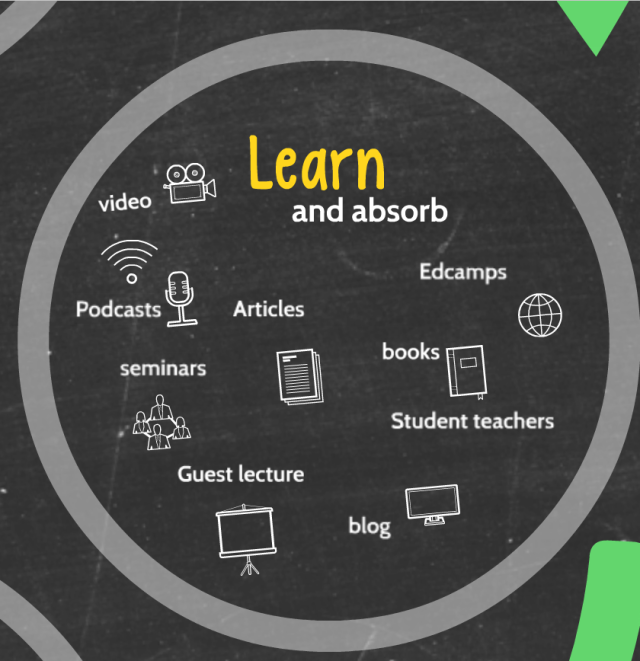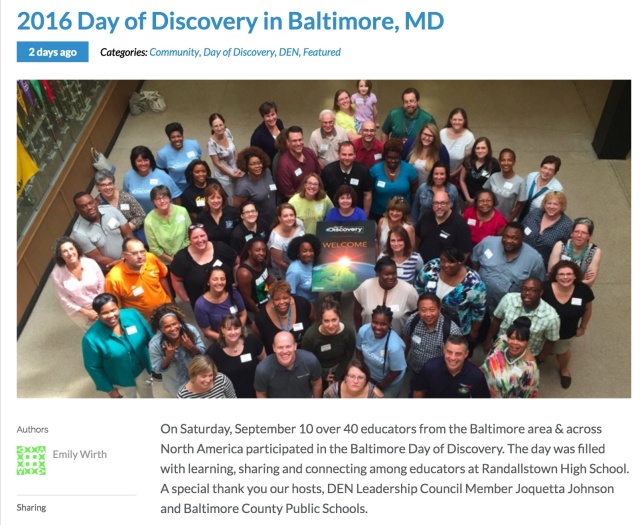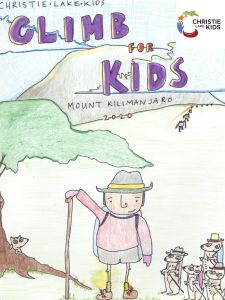Isn’t it wonderful when a writer poses a question, then answers it right in the title? Why read on – you have your answer!
Well, I hope you will read more. Of course, we should all be connecting and I would argue that we all do in an increasingly varied number of ways. I would argue that educators need to reflect on how they are already connecting and how these connections are contributing to the development of their personal learning networks.
Here in Ottawa, we just spent two wonderful days of learning hosted by the University of Ottawa Faculty of Education and Discovery Education. We had some excellent workshops on PLNs and new professional development. Derek Rhodenizer presented a great workshop on Personalized PD.

He makes the excellent point that we all connect using a whole variety of methods, including podcasts – something that Derek does frequently. I never thought of using podcasts as a way of sharing learning, but it works for Derek. For others, it might be blogging, Twitter, and more recently Instagram or SnapChat.

Derek’s presentation is important. He emphasizes that we are all connecting – even if we don’t know it. We connect even when we have a conversation in the hallway after a long day – learning is going on all the time, we just need to acknowledge it and grow our networks.
The Ontario Ministry of Education in its excellent Capacity Building Series has several monograms on the importance of teachers making personal connections to advance their personal learning through collaborative inquiry – one in the series states that teacher inquiry is a critical part of teachers’ daily work. (pg. 1 Collaborative Teacher Inquiry September 2010)
In my presentation, I focused specifically on Twitter, Voxer and Discovery Education’s Educators’ Network called the DEN. What I love about the DEN is that it focuses on the development of personal relationships through small, intimate ‘Day of Discovery’ conferences, virtual conferences, summer institutes and a variety of social media tools. The emphasis here is on the personal conversation which really makes it unique in this digital age.

Focusing on the human connection is becoming increasingly important. One great, relatively new PLN tool is Voxer. You can find me on Voxer at mcguirp – happy to connect!
We were able to display the power of personal connection through Voxer by inviting Donna Miller Fry to talk to us during one of the workshops. Here is part of what she had to say to the workshop participants.
Pretty amazing to have such an influential Ontario education contribute to our learning in Ottawa while she waited for the power to come back on in Thunder Bay!
So, we all connect in some fashion. How do you connect? You are doing this – what is your next step?


































